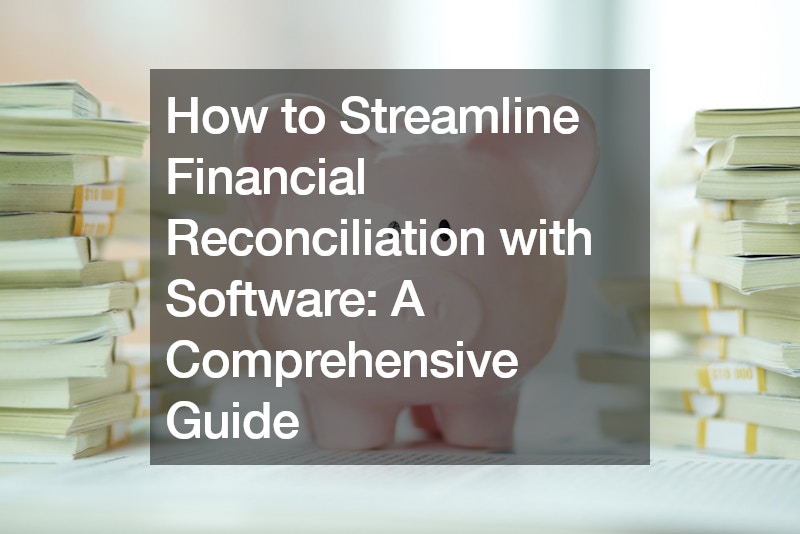
In today’s fast-paced business environment, financial reconciliation plays a crucial role in maintaining accurate and transparent accounting records. However, manual reconciliation processes can be time-consuming and prone to errors. Thankfully, advancements in technology have paved the way for financial reconciliation software, offering businesses efficient solutions to streamline this essential task.
The Benefits of Financial Reconciliation Software
Financial reconciliation software automates the process of comparing financial transactions between different accounts or systems, such as bank statements and accounting records.
By leveraging this software, businesses can achieve greater accuracy, save time, and improve overall efficiency in their financial reconciliation efforts.
One of the primary benefits of financial reconciliation software is its ability to ensure accuracy and consistency in financial records. Manual reconciliation processes are susceptible to human error, leading to discrepancies between accounting records and actual financial transactions. With financial reconciliation software, these errors are minimized, as the software automatically matches transactions, identifies discrepancies, and flags potential issues for further investigation.
Additionally, financial reconciliation software enhances efficiency by streamlining the reconciliation process. Manual reconciliation often involves tedious tasks such as data entry, matching transactions, and reconciling discrepancies. Financial reconciliation software automates these tasks, allowing businesses to reconcile their accounts more quickly and effectively. This automation frees up valuable time for finance teams to focus on more strategic activities, such as financial analysis and decision-making.
Greater Visibility and Control
Furthermore, financial reconciliation software provides businesses with greater visibility and control over their financial data. By centralizing financial information and providing real-time updates, the software enables businesses to track and monitor their financial transactions more effectively. This increased visibility helps businesses identify trends, detect anomalies, and make informed decisions to improve financial performance.
Selecting the Right Software Solution
When selecting financial reconciliation software for your business, it’s essential to consider several factors to ensure you choose the right solution. Firstly, assess your business’s specific reconciliation needs and objectives. Different software solutions offer varying features and functionalities, so it’s crucial to choose one that aligns with your business requirements.
Secondly, consider the integration capabilities of the software. Ideally, the financial reconciliation software should seamlessly integrate with your existing accounting systems, bank accounts, and other financial software tools. This integration ensures smooth data flow between systems, reducing manual data entry and improving data accuracy.
Additionally, evaluate the scalability and flexibility of the software. As your business grows and evolves, your reconciliation needs may change. Choose a software solution that can accommodate future growth and adapt to evolving business requirements.
Ensuring Security and Compliance
Furthermore, consider the security features of the software. Since financial data is highly sensitive, it’s essential to select a solution that prioritizes data security and compliance with industry regulations. Look for features such as data encryption, role-based access controls, and regular security updates to ensure the protection of your financial information.
Implementation and Training
Once you’ve selected a financial reconciliation software solution, it’s essential to implement it effectively within your organization. Provide comprehensive training to your finance team to ensure they understand how to use the software effectively. Additionally, establish clear processes and guidelines for reconciling accounts using the software to maintain consistency and accuracy.
The Benefits of Financial Reconciliation Software
Financial reconciliation software offers a multitude of benefits for businesses seeking to streamline their accounting processes and improve overall efficiency. One significant advantage is the reduction of human error. Manual reconciliation processes are prone to mistakes, which can lead to inaccuracies in financial records and potentially costly errors. Financial reconciliation software automates many of these processes, significantly reducing the risk of errors and ensuring greater accuracy in financial reporting.
Moreover, financial reconciliation software enhances efficiency by speeding up the reconciliation process. Manual reconciliation can be labor-intensive and time-consuming, especially for businesses with a high volume of transactions. With automation, financial reconciliation tasks are completed more quickly and efficiently, allowing finance teams to focus their time and energy on more strategic activities.
Another key benefit of financial reconciliation software is its ability to provide real-time insights into financial data. By centralizing financial information and providing instant updates, the software enables businesses to access up-to-date financial reports and analytics, empowering them to make informed decisions quickly.
Additionally, financial reconciliation software improves compliance and audit readiness. With automated reconciliation processes and robust tracking capabilities, businesses can ensure they adhere to regulatory requirements and maintain accurate financial records. This not only reduces the risk of compliance violations but also streamlines the audit process, saving time and resources.
Furthermore, financial reconciliation software enhances collaboration and communication within finance teams and across departments. By providing a centralized platform for managing financial data, the software facilitates seamless collaboration and sharing of information, enabling teams to work together more effectively towards common goals.
In conclusion, financial reconciliation software offers businesses a powerful tool to streamline their reconciliation processes, improve accuracy, and enhance efficiency. By automating tedious tasks, providing greater visibility and control, and integrating seamlessly with existing systems, financial reconciliation software empowers businesses to manage their financial data more effectively. By selecting the right software solution and implementing it effectively, businesses can streamline their financial reconciliation efforts and focus on driving success and growth.
.




